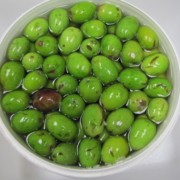By Prof. Bob Hutkins, PhD, University of Nebraska Lincoln, USA
Many ISAPPers remember when fermented foods attracted hardly any serious attention from scientists outside the field. Certainly, most clinicians and health professionals gave little notice to fermented foods. In the decades before there were artisan bakeries and microbreweries proliferating on Main Street USA, even consumers did not seem very interested in fermented foods.
When I began my graduate program at the University of Minnesota in 1980, I was very interested in microbiology, but I did not know a lot about fermented foods. Accordingly, I was offered two possible research projects. One involved growing flasks of Staphylococcus aureus, concentrating the enterotoxins, feeding that material to lab animals, and then waiting for the emetic response.
My other option was to study how the yogurt bacterium, Streptococcus thermophilus, metabolized lactose in milk. This was the easiest career choice ever, and the rest, as they say, is history.
Indeed, that lab at Minnesota was one of only a handful in North America that conducted research on the physiology, ecology, and genetics of microbes important in fermented foods. Of the few labs in North America delving into fermented foods, most emphasized dairy fermentations, although some studied vegetable, meat, beer, wine, and bread fermentations. Globally, labs in Europe, Japan, Korea, Australia, and New Zealand were more engaged in fermented foods research than we were in North America, but overall, the field did not draw high numbers of interested researchers or students.
That’s not to say there weren’t exciting and important research discoveries occurring. Most research at that time was focused on the relevant functional properties of the microbes. This included carbohydrate and protein metabolism, flavor and texture development, tolerance to acid and salt, bacteriocin production, and bacteriophage resistance. Despite their importance, even fewer labs studied yeasts and molds, and the focus was on lactic acid bacteria.
Other researchers were more interested in the health benefits of fermented foods. Again, yogurt and other cultured dairy foods attracted the most interest. According to PubMed, there were about 70 randomized clinical trials (RCTs) with yogurt as the intervention between 1981 and 2001. Over the next 20 years, there were more than 400 yogurt RCTs.
Fast forward a generation or two to 2021, and now fermented foods and beverages are all the rage. Certainly, having the molecular tools to sequence genomes and interrogate entire microbiomes of these foods has contributed to this new-found interest. Scanning the recent literature, there are dozens of published papers on microbiomes (and metabolomes) of dozens of fermented foods, including kombucha (and their associated symbiotic cultures of bacteria and yeast, known as SCOBYs), kefir, kimchi, beer (and barrels), cheese (and cheese rinds), wine, vinegar, miso and soy sauce, and dry fermented sausage.
It’s not just fermentation researchers who are interested in fermented foods. For ecologists and systems biologists, fermented foods serve as model systems to understand succession and community dynamics and how different groups of bacteria, yeast, and mold compete for resources.
Moreover, consumers can benefit when companies that manufacture fermented foods take advantage of these tools. The data obtained from fermented food microbiota analyses can help to correlate microbiome composition to quality attributes or identify potential sources of contamination.
Importantly, it is also now possible to screen microbiomes of fermented foods for gene clusters that encode potential health traits. Indeed, in addition to microbiome analyses of fermented foods, assessing their health benefits is now driving much of the research wave.
As mentioned above, more than 400 yogurt RCTs were published in the past two decades, but alas, there were far fewer RCTs reported for other fermented foods. This situation, however, is already changing. The widely reported fiber and fermented foods clinical trial led by Stanford researchers was published in Cell earlier this year and showed both microbiome and immune effects. Other RCTs are now in various stages, according to clinicaltrials.gov.
Twenty years ago, when ISAPP was formed, I suspect few of us would have imagined that the science of fermented foods would be an ISAPP priority. If you need proof that it is, look no further than the 2021 consensus paper on fermented foods. It remains one of the most highly viewed papers published by Nature Reviews Gastroenterology and Hepatology.
Further evidence of the broad interest in fermented foods was the recently held inaugural meeting of The Fermentation Association. Participants included members of the fermented foods industry, culture suppliers, nutritionists, chefs, food writers, journalists, retailers, scientists and researchers.
Several ISAPP board members also presented seminars, including this one who remains very happy to have made a career of studying fermented foods rather than the emetic response of microbial toxins.










